To accompany contemprory strategy analysis concepts techiniques application chapter15slides
Bạn đang xem bản rút gọn của tài liệu. Xem và tải ngay bản đầy đủ của tài liệu tại đây (66.98 KB, 11 trang )
Diversification
Diversification Strategy
Strategy
OUTLINE
• Introduction: The Basic Issues
• The Trend over Time
• Motives for Diversification
- Growth and Risk Reduction
- Shareholder Value: Porter’s Essential Tests.
• Competitive Advantage from Diversification
• Diversification and Performance: Empirical Evidence
• Relatedness in Diversification
The
The Basic
Basic Issues
Issues in
in Diversification
Diversification Decisions
Decisions
Superior profit derives from two sources:
INDUSTRY
ATTRACTIVENESS
RATE OF PROFIT
> COST OF CAPITAL
COMPETITIVE
ADVANTAGE
Diversification decisions involve these same two issues:
• How attractive is the sector to be entered?
•Can the firm achieve a competitive advantage?
Diversification
Diversificationamong
among the
the US
US Fortune
Fortune 500,
500,1949-74
1949-74
70.2
29.8
63.5
53.7
1949
1954
36.5
53.9
46.3
1959
39.9
46.1
1964
Percentage of Specialized Companies (single-business,
vertically-integrated and dominant-business)
Percentage of Diversified Companies (related-business
and unrelated business)
Note:
37.0
60.1
1969
63.0
1974
During the 1980s and 1990s the trend reversed as large
companies refocused upon their core businesses
Diversification
Diversificationamong
amongLarge
Large UK
UK
Corporations,
Corporations,1950-93
1950-93
70
60
Single business
50
Dominant
business
Related business
40
30
20
Unrelated
business
10
0
1950 1960 1970 1983 1993
Diversification:
Diversification: The
TheEvolution
Evolutionof
of Management
Management
Thinking
Thinking and
and Management
ManagementPractice
Practice
MANAGEMENT
GOALS
COMPANY
DEVELOPMENTS
Quest for Growth
Refocusing on
shareholder
value
Rise of conglomerates
Refocusing on
Emphasis on“related’
Related diversification
core businesses
& “concentric”
by industrial firms
Divestment
diversification
Financial Analysis
STRATEGY TOOLS
& CONCEPTS
Financial
problems of
conglomerates
Diffusion of
M form structures
Analysis of
economies of
scope &
“synergy”
Portfolio
planning
models
Capital asset
Development of corporate planning systems pricing model
1950
1990
1960
1970
Competitive
advantage through
Speed, flexibility,
and capability
Joint ventures,
Alliance, corporate
venturing
Value based Transaction
management cost analysis
Core
competences
Dominant logic
1980
Dynamic
capability
Motives
Motives for
for Diversification
Diversification
GROWTH
--The desire to escape stagnant or declining industries
a powerful motives for diversification (e.g. tobacco,
oil, newspapers).
--But, growth satisfies managers not shareholders.
--Growth strategies (esp. by acquisition), tend to
destroy shareholder value
RISK
SPREADING
--Diversification reduces variance of profit flows
--But, doesn’t create value for shareholders—they can
hold diversified portfolios of securities.
--Capital Asset Pricing Model shows that diversification
lowers unsystematic risk not systematic risk.
PROFIT
--For diversification to create shareholder value, then
bringing together of different businesses under
common ownership & must somehow increase
their profitability.
Diversification
Diversification and
and Shareholder
Shareholder Value:
Value:
Porter’s
Porter’s Three
Three Essential
Essential Tests
Tests
If diversification is to create shareholder value, it must meet
three tests:
1. The Attractiveness Test: diversification must be directed
towards attractive industries (or have the potential to
become attractive).
2. The Cost of Entry Test : the cost of entry must not capitalize
all future profits.
3. The Better-Off Test: either the new unit must gain
competitive advantage from its link with the company, or
vice-versa. (i.e. some form of “synergy” must be present)
Additional source of value from diversification: Option value
Competitive
CompetitiveAdvantage
Advantage from
from Diversification
Diversification
MARKET
POWER
ECONOMIES
OF
SCOPE
• Predatory pricing/tie-in sales
• Reciprocal buying
• Mutual forbearance
Evidence
of these
is sparse
• Sharing tangible resources (research labs, distribution
systems) across multiple businesses
• Sharing intangible resources (brands, technology) across
multiple businesses
• Transferring functional capabilities (marketing, product
development) across businesses
• Applying general management capabilities to multiple
businesses
• Economies of scope not a sufficient basis for
ECONOMIES diversification ----must be supported by transaction costs
FROM
• Diversification firm can avoid transaction costs by
INTERNALIZING operating internal capital and labor markets
TRANSACTIONS • Key advantage of diversified firm over external markets--superior access to information
Competitive
CompetitiveAdvantage
Advantage from
from Diversification
Diversification
MARKET
POWER
ECONOMIES
OF
SCOPE
• Predatory pricing
• Reciprocal buying
• Mutual forbearance
Evidence
of these
is sparse
• Sharing tangible resources (research labs, distribution
systems) across multiple businesses
• Sharing intangible resources (brands, technology) across
multiple businesses
• Transferring functional capabilities (marketing, product
development) across businesses
• Applying general management capabilities to multiple
businesses
• Economies of scope not a sufficient basis for
ECONOMIES diversification—must be supported by transaction costs
FROM
• Diversification firm can avoid transaction costs by
INTERNALIZING operating internal capital and labor markets
TRANSACTIONS • Key advantage of diversified firm over external markets--superior access to information
Relatedness
Relatedness in
in Diversification
Diversification
Economies of scope in diversification derive from two
types of relatedness:
• Operational Relatedness-- synergies from sharing
resources across businesses (common distribution
facilities, brands, joint R&D)
• Strategic Relatedness-- synergies at the corporate level
deriving from the ability to apply common management
capabilities to different businesses.
Problem of operational relatedness:- the benefits in terms
of economies of scope may be dwarfed by the
administrative costs involved in their exploitation.
Branson
Branson&&the
theVirgin
VirginCompanies:
Companies:Making
Makingstrategic
strategic
sense
senseof
ofapparent
apparententrepreneurial
entrepreneurialchaos
chaos
KEY RESOURCES
•Virgin brand
•Branson
-charisma/image
--PR skills
-networking skills
-entrepreneurial flair
DOMINANT LOGIC
•Seek competitive advantage by start-up cos.
pursuing innovative differentiation in
underserved market with sleepy incumbents
DESIGNING A CORPORATE STRATEGY
& STRUCTURE
• What’s the business model?
(Does Virgin create value by
being an entrepreneurial incubator,
a venture capital fund, a
diversified corporation, or what?)
• Which businesses to divest?
• Criteria for future diversification
• What type of structure?—Is there
a need for greater formalization?
CHARACTERISTICS OF
MARKETSTHAT CONFORM
TO THIS LOGIC
•consumer
•dominant incumbent
•scope for new approaches
to customer service
•high entry barriers to other
start-ups
•Branson/Virgin image
appeals to customers
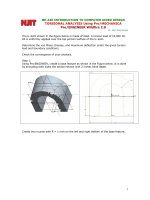

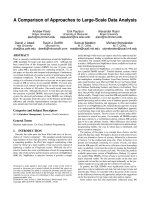

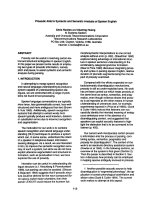
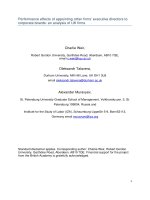
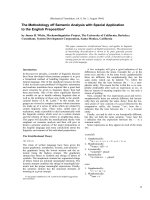
![small wind turbines [electronic resource] analysis, design, and application](https://media.store123doc.com/images/document/14/y/ql/medium_qlr1401476475.jpg)

